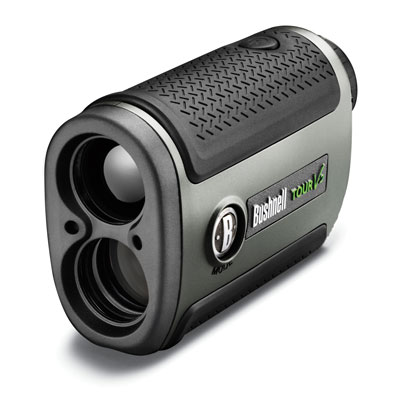Bushnell Tour V2
Golf Monthly's James Bunce tests the Bushnell Tour V2

'BEST VALUE LASER' Unit price: £239 Download costs: None Key technology: PinSeeker technology selects the closest object it can find. This is designed to make differentiating the flag from background objects easier. A rain mode helps to compensate for rain and snow conditions, making it easier to pick up yardages. The Tour V2 can detect distances to the flag from 300 yards and in. A good fit in the hand and no pre-round preparation required. The process was uncomplicated and required just one push of a button to operate. But... using the device three or four times a hole takes a lot of time. Flags positioned in front of trees were sometimes hard to pick up. GM verdict (James Bunce - 23 Handicap): The benefits of a laser device for the lower handicapper, capable of consistently hitting accurate shots, are obvious. However, for many higher handicappers, distances to the front, back and middle of greens are enough. The Tour V2 felt good in the hand, but for someone who hits more shots than the lower handicappers, a lot of time is spent getting it in and out of the bag. The lack of preparation required before a round is a plus point. Value: 13/15 Ease of use: 13/15 Information: 12/15 Accuracy: 13/15 Set-up: 10/10 Ergonomics: 8/10 Performance: 16/20 Total: 85/100
Why you can trust Golf Monthly
As a relative newcomer to golf, the distance measuring device (DMD) has developed at a rapid pace. The information has become more accurate, devices are easier to use and the good news is, they're also becoming more affordable. With this in mind, we tested 12 models that have been launched since our 2011 test. Not only have top-end models improved the quality of maps and the amount of information on offer, but there has also been an influx of stripped-back versions that are easy to use and provide basic information.
The major laser brands have also refined their products to make them easier to use. All this means there are more options out there than ever before, with products designed to meet the needs of different golfers. In this test, we aim to help refine your search and identify the best products on the market.
Venue:
The Golf Monthly staff conducted the test at the beautiful Liphook Golf Club in Hampshire, number 79 in the Golf Monthly Top 100 list. It was a course that the vast majority of testers had never played before and features a number of blind shots, as well as holes that require a club other than driver from the tee. The course offered the perfect opportunity to test each device to its fullest.
Test criteria:
To begin with, the test team went through the set-up process for every device to compare how easy it was to get the unit ready for play. Each member of the team then tried out two units on the course. The test team's handicaps varied from five to 24, and ranged from long-time DMD users to those who had never used one before. This helped us to test the suitability of a unit for different golfers. After the round, the team compared the features and benefits of each model and awarded points for the following:
Value: The initial price and download costs comparative to the quality of the unit.
Subscribe to the Golf Monthly newsletter to stay up to date with all the latest tour news, equipment news, reviews, head-to-heads and buyer’s guides from our team of experienced experts.
Set-up: How easy the unit is to set up initially and download courses on to.
Ease of use: How easy it is to read yardages, as well as use any other additional features.
Information: The quality and quantity of information provided on the unit.
Ergonomics: How the unit feels in the hand, the button design and the bag clip.
Accuracy: How the yardage readings compare with other units, yardage markers and course guides.
Performance: An overall rating including how robust the unit is, the battery life, the clarity of the screen and how the unit attached to a golf bag.
James was art editor for Golf Monthly from 2015 - has a great beard.